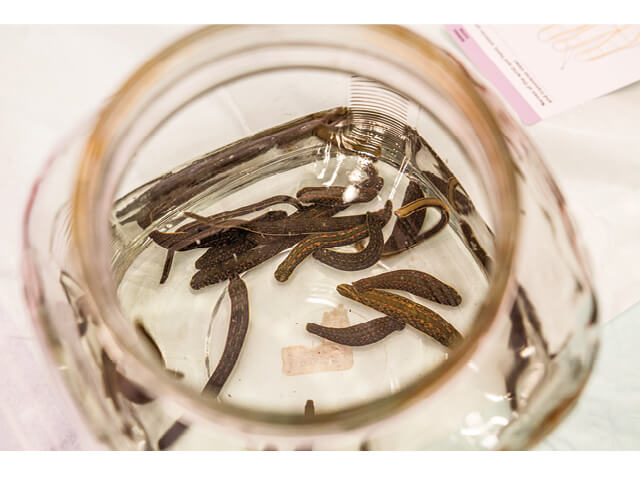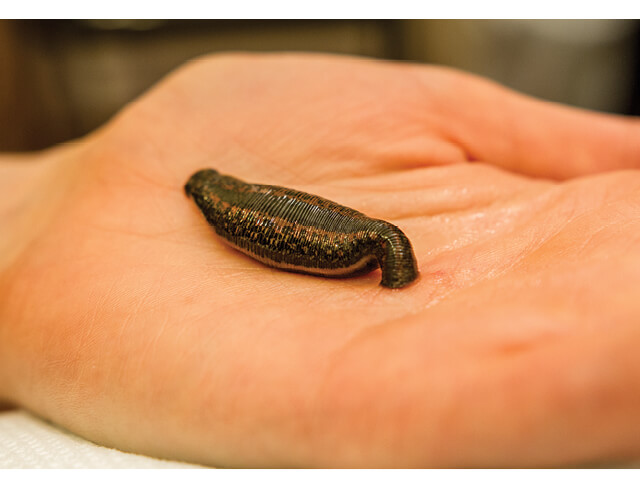Let it Bleed: Are Leeches the Answer to All Our Problems?


Photos by Jane Bruce
On a cold day in May, I found myself counting the leeches swimming in a large glass jar of filtered water at the Silesian Holistic Center of New York in Greenpoint. Some were using their suckers to stay curled up near the lid. I lost count at fifteen, so started again. My hand was out, shaking slightly, and hirudotherapist Andrew Plucinski was swabbing my palm with what smelled like rubbing alcohol. Then he applied a leech.
It had been seven years since I nicked a nerve in my palm and felt a bolt of thunder shoot through my ring finger. In the emergency room, the doctor had said that I would need to see a specialist for surgery, but that option was quickly off the table when I lost my insurance coverage a few weeks later. Over time, I got used to my finger feeling numb and to the chronic pain in my palm.
Yet, when I first dropped by Plucinski’s center to talk about leeches, my finger was the last thing on my mind, even though I had read about medical leeches being used to treat everything from cardiovascular disease to migraines to hemorrhoids. In fact, their popularity was so great in 19th century Europe that they were over-harvested almost to extinction.
At Plucinski’s center, a chic, thirty-something Polish woman was getting hirudotherapy for kidney issues while nonchalantly checking her phone. Classical music played over the sound system, and plants dotted the space. Plucinski spoke to me about how leeches were still widely used in Russia, Poland, and Germany, and my own research also confirmed that leeches were even making a slow comeback in the United States—mostly in reconstructive plastic surgeries and skin grafts, ever since the FDA approved them as a medical device in 2004.
Plucinski’s clients, however, mostly came in complaining of migraines, menstrual problems, cysts, varicose veins, and hemorrhoids. “The big ones right now are allergies and asthma,” he added, “and sciatica year round. This is very easily treatable with leeches.” When Plucinski told me of leeches being used to salvage a reattached fingertip that had been pooling blood, I thought about my own finger. Did he think leeches could help?
A few days later, I found myself with a leech firmly biting into my palm, right over where I had nicked that nerve all those years ago. In hindsight, the feeling was realistically like being lightly and repeatedly pinched by human nails—probably only mildly uncomfortable to the average person.


But for anyone like me who has a fear of blood, the pinching was accompanied by extreme dizziness and panic. The fifteen to twenty minutes of leech therapy extended into infinity, as the leech slowly expanded with my blood inside of its tiny body and grew heavier in my palm. I couldn’t bear to look at my hand. Still, if this worked, I thought it would only be a small price to pay for being able to feel my finger again.
Almost twenty-four hours later, I have a small Y-shaped bite mark on my palm. Strangely enough, my finger feels as though someone has drawn a line down the middle to divide the two halves: the right side of the finger feels normal again, but the left side is still numb. Will I go back for a second round? Maybe. I’ll need a little time to build up my courage again. But also, it seems like maybe 19th century Europe was on to something. ♦
You might also like 




















